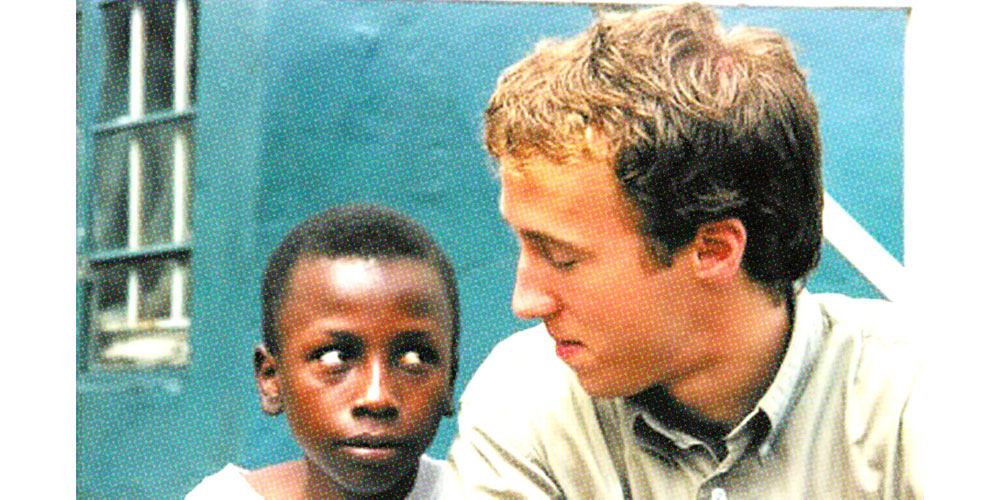
Beset by scandal and scrutiny, WE Charity announced earlier this month that it will cancel WE Days, pull its physical presence from schools, clarify the blurry line between itself and the ME to WE business, and “return to its roots” by prioritizing its international development work.
But what is that work?
WE describes its approach as “a holistic development model that provides five pillars of international development: education, healthcare, clean water and sanitation, food security, and alternative income programs.”
Despite the challenges of COVID-19, WE Charity tells Canadaland that its international development programs are operational around the world, and that it still employs over 130 full-time employees and “dozens” of part-time staff on the ground in Africa, Asia, and Latin America.
Canadaland ran those numbers past three former WE Charity employees with detailed, firsthand knowledge of the organization’s international development projects. Their collective knowledge of WE’s global development work goes back many years and extends up to recently this year.
They pointed us to documentation released by WE Charity about its international spending before the pandemic, and posed questions which Canadaland then put to WE.
According to WE Charity’s 2019 audited financial statements [pdf], it provided $8.7 million to the local non-profits that operate and supply its “WE Villages” projects in nine countries — an average of less than $1 million per country.”
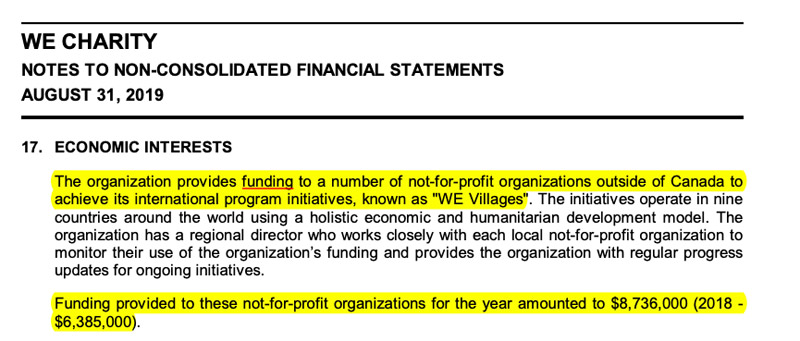
The same document says that WE’s total spending on international programs that year was $26.8 million.
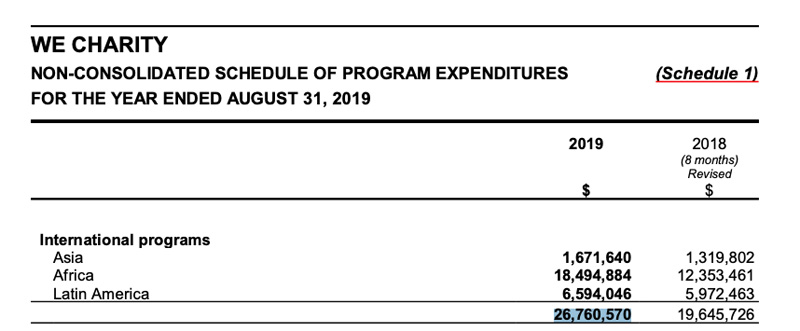
Any Canadian-based charity doing development work abroad will incur some program oversight costs at home. But given the disparity between the two figures, Canadaland asked WE — what percentage of their international program spending in 2019 was actually spent in Canada?
WE Charity did not answer that question. They did say that some of their international program spending goes to international suppliers and WE Charity global staff, as well as “education and advocacy programs,” including in North America. They did not provide a breakdown of how much money goes to each.
Best practice for charities is to provide information on spending at home vs. spending abroad, says Kate Bahen, managing director of Charity Intelligence Canada, the charity watchdog.
She also says that “typically for international development work, program evaluation and oversight costs are between 5-12%.”
WE Charity did provide some details on its recipient countries, as did the former WE employees whom Canadaland spoke to. So let’s take a look at WE Charity’s international development projects in nearly all of the countries in which it operates, both before and after the pandemic struck.
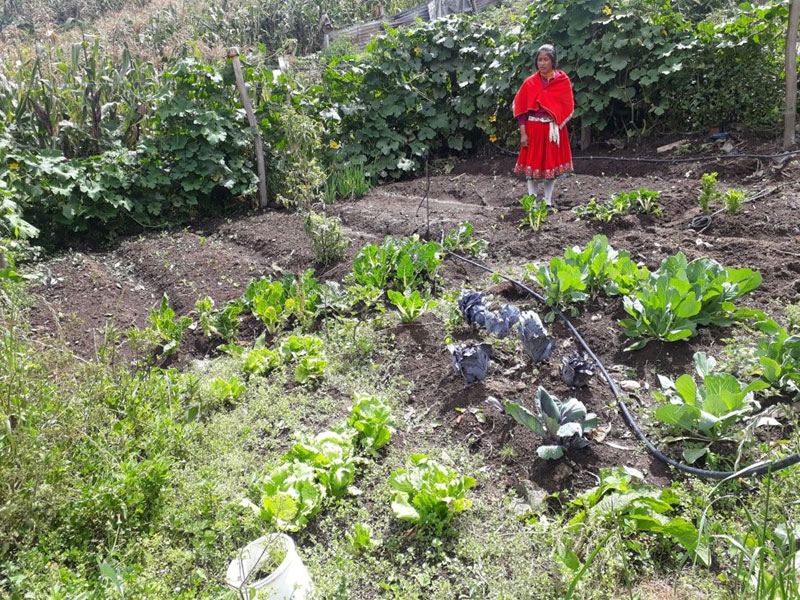
WE.org says:
“Both Chimborazo [province] and the Amazon have some of the largest Indigenous populations in the country and also some of the highest poverty rates. Through WE Villages, we work in partnership with these communities to eliminate barriers that prevent children from accessing education, to improve health care, and to open up income opportunities.”
Current status, according to WE:
“In Ecuador, the WE Agricultural Learning Centre currently operates over 100 acres of production and conservation to assist with food security for WE Villages in the Amazon basin. During a time of COVID-19, the food security programs provide critical nutrition to children and families throughout the region.
Former WE employees say:
“[Ecuador] Country Director Scott Baker has left the country with his family. They let almost everyone go in the Amazon and in their head office in Quito and left a skeleton security crew.”
“Operations in Ecuador were dramatically reduced. The manager for the WE Agricultural Learning Center was one of the people who was not let go in March.”
“Ecuador was already reduced dramatically in the 2018/19 budget.” (WE says this was due to building the agricultural centre the year prior.)
WE.org says:
“Through our work so far we have: built over 80 schools in Nicaragua; launched women’s empowerment programming with artisan groups in two partner communities; implemented programming in four communities in the Carazo Department of Nicaragua; implemented four community water projects, providing clean water to 1,400 community members.”
Current status, according to WE:
“In light of the political unrest in Nicaragua this past year, and safety concerns the situation posed, WE Charity made the decision to pause its work in the country.”
Former WE employees say:
“Nicaragua was called off in 2018.”
WE.org says:
“We initially focused efforts on school-building, but soon expanded, implementing projects to improve communities’ access to clean water, health care and alternative income sources. Our local partner on these projects, the Sisters of St. Joseph Cluny, have been working in Sierra Leone for many years.Through WE Villages, we have provided rural communities with clean water by rehabilitating and drilling new wells and constructing latrines directly at school sites.”
Current status, according to WE:
“WE Charity’s development work is operational” in Sierra Leone.
Former WE employees say:
“There are no WE staff in Sierra Leone, and there never have been. They funded a group of nuns called the Sisters of St. Joseph Cluny to implement school-building and education projects. Yes, they would still be operating because they operate independent of WE’s funding, though WE’s funding did build a significant amount of infrastructure years ago.”
“Sierra Leone was not somewhere that ME to WE could easily sell trips. Countries where we could run trips got more money than those where we couldn’t. They had youth groups going [to Ghana] for a while. As soon as it wasn’t profitable, they stopped. It was painful. It was so bad. It’s a great thing to begin work in a new country, but they quickly closed operations once [WE corporate partner/donor Virgin Atlantic] stopped flying there. They did the same in the Dominican Republic, where they operated for a short period of time and it was a failure. Opened operations just to quickly close again.” (WE says both destinations were popular and WE left due to other operational considerations.)
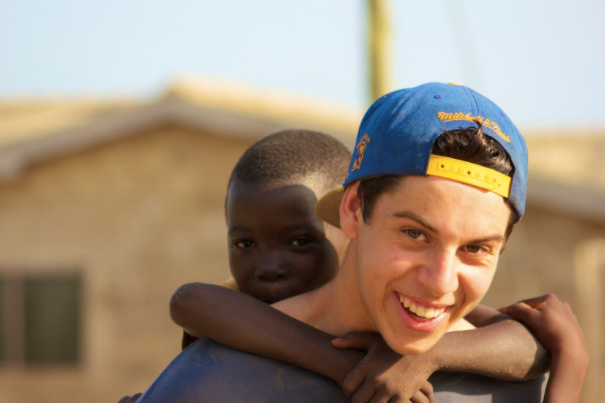
WE.org says:
“We have worked with the Tanzanian government to improve educational outcomes through enhanced infrastructure, programming, and greater incentives for teachers. The WE Villages commitment to community development has also served to unite government leaders, local elders, parents, and students in the Tanzanian communities where we work.”
Current status, according to WE:
“WE Charity’s development work is operational” in Tanzania.”We continue to have a diverse group of funders that support WE’s Tanzania programming.”
Former WE employees say:
“There was some youth fundraising for Tanzania. And Peter Gilgan was the one big donor, his foundation’s name is all over it [the Gilgan Family Leadership Centre in Arusha]. But now [Tanzania] is not a priority.”
“There was minimal funding for projects in Tanzania, pre-COVID. There was some youth fundraising and one large donor. We would scramble to show [the donor] something when they visited. But Tanzania was not getting the funding it needed.” (WE says the projects were “on track” and witnessed firsthand.)
WE.org says:
“WE Charity has been working to break the cycle of poverty in rural communities and transform education in the country, partnering with local governments to build and furnish more schools.…We also work with local governments to provide these same communities with agriculture and food security programs, alternative income opportunities such as animal husbandry, and to meet specific requests to assist students and their families.”
Current status, according to WE:
“WE Charity’s development work is operational in rural China.”
Former WE employees say:
“We stopped doing youth trips to China before the pandemic. The idea was to also stop [development] operations, but some of our donor companies have manufacturing operations in China so they want to fund projects that give back there. We keep a small presence there for when that happens — maybe three people. China was not a priority.” (WE disputes this.)
WE.org says:
“Education has been our primary focus…The WE Villages Education Pillar of Impact also facilitates the unification of children in the classroom from the social stratifications of India’s caste system. We work together with communities to get rid of the obstacles that prevent children from accessing education.”
Current status, according to WE:
“In India, public health education is currently underway in rural areas, including education on physical distancing, boiling water, and hand-washing. In June, high-yield corn seeds and soy seed were distributed to farmer households in WE Village in Rajasthan communities to assist with food security.”
Former WE employees say:
“India had ME to WE trips and a lodge for wealthy donors, which led to money for projects, pre-COVID.”
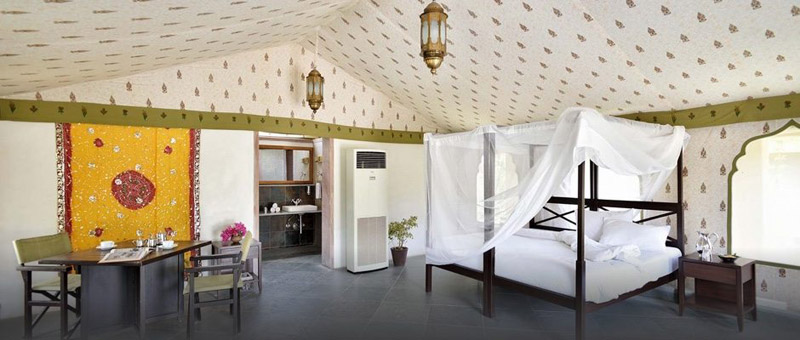
“[WE co-founder Craig Kielburger] would dream up an idea for India with a donor and sell it, but the country director would push back.”
“The country director, Lloyd [Hanoman], wanted basic development work and pushed back at new projects. So there was a slowdown. India was not a priority.”
“I wouldn’t say it was deprioritized, but it was slow. Slow development can be good development. Grand expansion plans would come from [co-founders Marc and Craig Kielburger]. Lloyd put his foot down.” (WE says the Kielburgers “allowed country directors an extreme amount of autonomy for development projects.”)
“Lloyd stayed during the pandemic.”
WE.org says:
“Focusing our efforts in the most rural and underdeveloped area of the country, the Central Plateau region, we work in six rural communities in the mountains outside of Port-au-Prince to…improve access to quality education for rural children; ensure that rural populations have access to essential services like water and health care…; promote rural community development and support efforts… [and] help Haiti realize its goal of universal education.”
Current status, according to WE:
“Even during COVID-19, we have recently completed one of the largest solar projects for hospital infrastructure in the country.”
Former WE employees say:
“[Country director] Erin Barton is also WE’s partnerships director, she has relationships with WE’s big corporate donors. She’s very passionate about Haiti.”
“The country director has always been based in Canada.”
“Haiti was a struggle. It’s hard to bring donors there. We had maybe 7-8 [full-time staffers] there, pre-pandemic.”
“Some donor trips went to Haiti. They were small. Erin was passionate and defended [Haiti]. Marc and Craig would have shut Haiti down, but Erin is in charge of so many corporate partnerships, they let her have Haiti. But it was deprioritized.” (WE disputes this.)
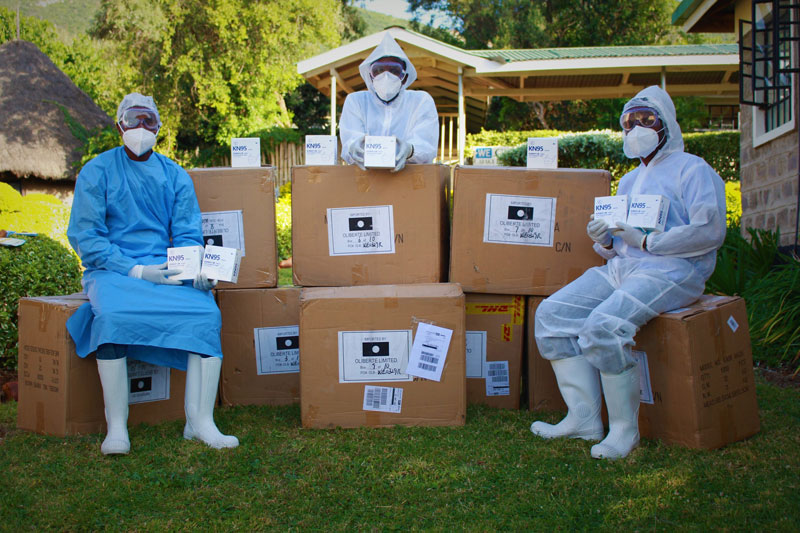
WE.org says:
“Through WE Villages, we have: provided 13,000 Kenyan children with the opportunity to attend WE-supported schools every day; built over 230+ schoolrooms, libraries, teachers’ offices, and kitchens; constructed an all-girls secondary school for both Maasai and Kipsigis students, and an all-boys secondary school campus as well; and opened the doors to two health centres: Baraka Hospital and Kishon Health Centre.
Current status, according to WE:
“Kenya is one of our largest operational countries. Programs continue in public health education on COVID-19 reaching tens of thousands of people. WE operates a large-scale food production and food security distribution program. Baraka Hospital is the only medical institution serving a catchment region of tens of thousands of people. Educational resources are being distributed in multiple villages for secondary students to continue at-home studies. Millions of dollars in COVID-19 medical supplies have arrived in-country.”(With regards to the “Mamas” artisanal beaded bracelet program): “We have made a difficult decision to indefinitely pause the production and sale of these goods. We know this has been an impactful project. Through beading, women have been able to earn meaningful pay. We know that husbands now view their wives as an asset to the family.”
Former WE employees say:
“I know for a fact a number of people on the charity side were let go when the pandemic hit. A lot of the work has been put on hold because of schools closing, and it seems they have focused on health programming in the country. They could very well have a few staff members keeping in touch with the students, and they could also be doing some basic programming to keep donors happy. I know Kenya was where they chose to focus on health and COVID support, so if there was a country where work would be ongoing, it would be here.”
“There was a challenge in moving forward with projects three years ago [while then- country director Peter Ruhiu was under investigation for theft], and we were not keeping up with what donors had funded. It was at times very challenging to report back to donors on the status of their projects, when there was little to update on.”
“Kenya was a very tricky situation. WE was in a very challenging financial situation as of September 2019. Marc was holding meetings about it, we were up for re-negotiation with big corporate partners such as Microsoft, and there was some impact of the scrutiny from Canadaland in terms of donor dollars lost. There was lots of pressure on the partnerships and donor fundraising teams. So we were over-extending ourselves, promising donors things that couldn’t happen. There was also a misalignment. Projects had been fully funded, but then that funding wouldn’t make it to the projects.” (WE disputes this.)
“Despite staff’s best efforts, Marc and Craig allowed the development work to be donor-driven or driven by them.…They would sell big visionary concepts without doing needs-assessment to see if communities would actually benefit.…This was non-negotiable. There was little to no line they weren’t willing to cross when it came to accepting money for development projects, and it was pushed on to each country director to figure out how to make it happen.”
Top image: A mid-2000s handout photo from WE Charity (then known as Free The Children).